Quarks, Hadrons and Nuclei
Gernot Eichmann
The building blocks of matter
We investigate how the fundamental constituents of matter – quarks and gluons – bind together to form hadrons and nuclei. The underlying theory of the strong interaction, Quantum Chromodynamics (QCD), shows many interesting non-perturbative phenomena like confinement, dynamical mass generation and the formation of bound states and resonances, which are not yet fully understood. One particularly exciting possibility is the existence of exotic hadrons such as tetraquarks, pentaquarks and other unconventional systems. To study them, we employ numerical simulations using functional methods, e.g., in the form of Dyson-Schwinger equations and covariant Bethe-Salpeter and Faddeev equations.
We are part of the ExoHad collaboration, a Topical Collaboration formed in 2023 to investigate exotic hadrons.
If you are interested in bachelor, master or PhD theses in our group, please contact me via email or in my office.
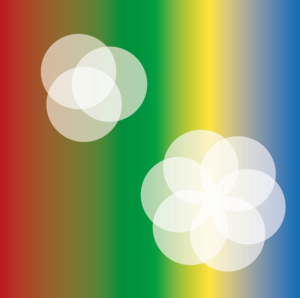
Summer term 2025
- Kern- und Teilchenphysik für Lehramt, Mo 17:15 - 18:45, HS 05.12
- Quantum Field Theory, Wed 13:00 - 14:30 & Thu 08:00 - 09:00, HS 05.12
- Quantum Field Theory Problem classes, Thu 09:00 - 10:00, HS 05.12
Winter term 2024/25
- Standard Model, Tue 14:00 - 15:00 & Thu 15:45 - 17:30, SR 05.11
Summer term 2024
- Kern- und Teilchenphysik für Lehramt, Mo 17:15 - 18:45, HS 05.12
- Fortgeschrittene Programmierung in der Physik
Winter term 2023/24
- Funktionalanalysis, Tue & Thu 8:30 - 9:45, HS 05.01
- Master seminar in Particle Physics, Thu 10:45 - 12:15, SR 05.11
Summer term 2023
- Kern- und Teilchenphysik für Lehramt, Mo 17:15 - 18:45, HS 05.12
- Fortgeschrittene Programmierung in der Physik
Winter term 2022/23
- Functional methods, Mo 13:30 - 15:00, SR 05.11
- Master seminar in Particle Physics, Mo 15:30 - 17:00, SR 15.47 (RESOWI, Block D, 4th floor)
- Funktionalanalysis, WS 2023 (German)
- Kern- und Teilchenphysik, SS 2023 (German)
- QCD and Hadron Physics, 2014-2021
- Quantum Field Theory, SS 2015
The publication list is also available from INSPIRE.
- The anomalous magnetic moment of the muon in the Standard Model: an update
R. Aliberti, T. Aoyama, E. Balzani, A. Bashir, G. Benton, et al.
e-Print: 2505.21476 [hep-ph].
- Timelike form factor for the anomalous process gamma* pi → pi pi
A. S. Miramontes, G. Eichmann, R. Alkofer
e-Print: 2504.20899 [hep-ph].
- Hadron physics with functional methods
G. Eichmann
e-Print: 2503.10397 [hep-ph].
- Five-body systems with Bethe-Salpeter equations
G. Eichmann, M. T. Peña, R. D. Torres
Phys. Lett. B 886 (2025) 139525
e-Print: 2502.17944 [hep-ph].
- Five-point functions and the permutation group S5
G. Eichmann, R. D. Torres
Phys. Rev. D 111 (2025) 9, 094008
e-Print: 2502.17225 [hep-ph].
- Axial-vector and scalar contributions to hadronic light-by-light scattering
G. Eichmann, C. S. Fischer, T. Häuser, O. Regenfelder
Eur. Phys. J. C 85 (2025) 4, 445
e-Print: 2411.05652 [hep-ph].
- The structure of open-flavour four-quark states in the charm and bottom region
J. Hoffer, G. Eichmann, C. S. Fischer
Phys. Rev. D 111 (2025) 5, 5
e-Print: 2409.05779 [hep-ph].
- Hidden-flavor four-quark states in the charm and bottom region
Joshua Hoffer, Gernot Eichmann, Christian S. Fischer
Phys. Rev. D 109 (2024) 7, 074025
e-Print: 2402.12830 [hep-ph].
- Bound states from the spectral Bethe-Salpeter equation
Gernot Eichmann, Andrés Gómez, Jan Horak, Jan M. Pawlowski, Jonas Wessely, Nicolas Wink
Phys. Rev. D 109 (2024) 9, 096024
e-Print: 2310.16353 [hep-ph].
- Strong Interaction Physics at the Luminosity Frontier with 22 GeV Electrons at Jefferson Lab
A. Accardi, P. Achenbach, D. Adhikari, A. Afanasev, C. S. Akondi, et al.
Eur. Phys. J. A 60 (2024) 9, 173
e-Print: 2306.09360 [hep-ph].
- The case for an EIC Theory Alliance: Theoretical Challenges of the EIC
Raktim Abir, Igor Akushevich, Tolga Altinoluk, Daniele Paolo Anderle, Fatma P. Aslan, et al.
e-Print: 2305.14572 [hep-ph].
- Heavy Baryon Spectroscopy in a Quark–Diquark Approach
André Torcato, Ana Arriaga, Gernot Eichmann, Teresa Peña
Few Body Syst. 64 (2023) 3, 45
e-Print: 2202.13378 [hep-ph].
- Theory introduction to baryon spectroscopy
Gernot Eichmann
Few Body Syst. 63 (2022) 3, 57
e-Print: 2202.13378 [hep-ph].
- Going to the light front with contour deformations
Gernot Eichmann, Eduardo Ferreira, Alfred Stadler
Phys. Rev. D 105 (2022) 3, 034009
e-Print: 2112.04858 [hep-ph].
- On mass generation in Landau-gauge Yang-Mills theory
Gernot Eichmann, Jan M. Pawlowski, João M. Silva
Phys. Rev. D 104 (2021) 11, 114016
e-Print: 2107.05352 [hep-ph].
- Four-quark states from functional methods
Gernot Eichmann, Christian S. Fischer, Walter Heupel, Nico Santowsky, Paul C. Wallbott,
Few Body Syst. 61 (2020) 4, 38
e-Print: 2008.10240 [hep-ph].
- Diquark Correlations in Hadron Physics: Origin, Impact and Evidence
M. Yu. Barabanov, M. A. Bedolla, W. K. Brooks, G. D. Cates, C. Chen et al.
Prog. Part. Nucl. Phys. 116 (2021) 103835
e-Print: 2008.07630 [hep-ph].
- The σ-meson: four-quark vs. two-quark components and decay width in a Bethe-Salpeter approach
Nico Santowsky, Gernot Eichmann, Christian S. Fischer, Paul C. Wallbott, Richard Williams, Phys. Rev. D 102 (2020) 5, 056014
e-Print: 2007.06495 [hep-ph].
- The anomalous magnetic moment of the muon in the Standard Model
T. Aoyama, N. Asmussen, M. Benayoun, J. Bijnens, T. Blum et al.
Phys. Rept. 887 (2020) 1-166
e-Print: 2006.04822 [hep-ph].
- Disentangling different structures in heavy-light four-quark states
Paul C. Wallbott, Gernot Eichmann, Christian S. Fischer
Accepted for publication in Phys. Rev. D Rapid Comm.
Phys. Rev.D 102 (2020) 5, 051501
e-Print: 2003.12407 [hep-ph].
- Kaon-box contribution to the anomalous magnetic moment of the muon
Gernot Eichmann, Christian S. Fischer, Richard Williams
Phys.Rev. D101 (2020) no.5, 054015
e-Print: 1910.06795 [hep-ph].
- Scattering amplitudes and contour deformations
Gernot Eichmann, Pedro Duarte, M. T. Peña, Alfred Stadler
Phys.Rev. D100 (2019) no.9, 094001
e-Print: 1907.05402 [hep-ph].
- X(3872) as a four-quark state in a Dyson-Schwinger/
Bethe-Salpeter approach
Paul C. Wallbott, Gernot Eichmann, Christian S. Fischer
Phys.Rev. D100 (2019) no.1, 014033
e-Print: 1905.02615 [hep-ph].
- Single pseudoscalar meson pole and pion box contributions
to the anomalous magnetic moment of the muon
Gernot Eichmann, Christian S. Fischer, Esther Weil, Richard Williams
Phys.Lett. B797 (2019) 134855
e-Print: 1903.10844 [hep-ph].
- Baryon Structure and reactions from Dyson-Schwinger equations
Gernot Eichmann, Christian S. Fischer
Few Body Syst. 60 (2019) no.1, 2.
- Nucleon resonances in Compton scattering
Gernot Eichmann, Gilberto Ramalho
Phys.Rev. D98 (2018) no.9, 093007
e-Print: 1806.04579 [hep-ph].
- Electromagnetic decays of the neutral pion
Esther Weil, Gernot Eichmann, Christian S. Fischer, Richard Williams
Phys.Rev. D96 (2017) no.1, 014021
e-Print: 1704.06046 [hep-ph].
- On the large-Q2 behavior of the pion transition form factor
Gernot Eichmann, Christian S. Fischer, Esther Weil, Richard Williams
Phys.Lett. B774 (2017) 425-429
e-Print: 1704.05774 [hep-ph].
- More about the light baryon spectrum
Gernot Eichmann
Few Body Syst. 58 (2017) no. 2, 81
e-Print: 1611.10118 [hep-ph].
- On light baryons and their excitations
Gernot Eichmann, Christian S. Fischer, Helios Sanchis-Alepuz
Phys. Rev. D94 (2016) 9, 094033
e-Print: 1607.05748 [hep-ph].
- Baryons as relativistic three-quark bound states
Gernot Eichmann, Helios Sanchis-Alepuz, Richard Williams, Reinhard Alkofer,
Christian S. Fischer. Prog. Part. Nucl. Phys. 91 (2016) 1-100
e-Print: 1606.09602 [hep-ph].
- Progress in the calculation of nucleon transition form factors
Gernot Eichmann
Few Body Syst. 57 (2016) no. 10, 965-973
e-Print: 1602.03462 [hep-ph].
- Towards a microscopic understanding of nucleon polarizabilities
Gernot Eichmann
Few Body Syst. 57 (2016) no. 7, 541-547
e-Print: 1601.04154 [hep-ph].
- Baryon effects on the location of QCD's critical end point
Gernot Eichmann, Christian S. Fischer, Christian A. Welzbacher
Phys. Rev. D93 (2016) 3, 034013
e-Print: 1509.02082 [hep-ph].
- The light scalar mesons as tetraquarks
Gernot Eichmann, Christian S. Fischer, Walter Heupel
Phys. Lett. B753 (2016) 282-287
e-Print: 1508.07178 [hep-ph].
- Four-point functions and the permutation group S4
Gernot Eichmann, Christian S. Fischer, Walter Heupel
Phys. Rev. D92 (2015) 5, 056005
e-Print: 1505.06336 [hep-ph].
- Electromagnetic baryon form factors in the Poincaré-covariant Faddeev approach
Reinhard Alkofer, Gernot Eichmann, Helios Sanchis-Alepuz, Richard Williams
Hyperfine Interact. 234 (2015) 1-3, 149-154
e-Print: 1412.8413 [hep-ph].
- The three-gluon vertex in Landau gauge
Gernot Eichmann, Richard Williams, Reinhard Alkofer, Milan Vujinovic
Phys. Rev. D89, 105014 (2014)
e-Print: 1402.1365 [hep-ph].
- Nucleon Compton scattering in the Dyson-Schwinger approach
Gernot Eichmann, Christian S. Fischer
Phys. Rev. D87, 036006 (2013)
e-Print: 1212.1761 [hep-ph].
- Tetraquark bound states in a Bethe-Salpeter approach
Walter Heupel, Gernot Eichmann, Christian S. Fischer
Phys.Lett. B718, 545 (2012)
e-Print: 1206.5129 [hep-ph].
- Nucleon to Delta electromagnetic transition in the Dyson-Schwinger approach
Gernot Eichmann, Diana Nicmorus
Phys. Rev. D85, 093004 (2012)
e-Print: 1112.2232 [hep-ph].
- Nucleon axial and pseudoscalar form factors
from the covariant Faddeev equation
Gernot Eichmann, Christian S. Fischer
Eur. Phys. J. A 48 (2011) 9
e-Print: 1111.2614 [hep-ph].
- Unified description of hadron-photon and hadron-meson scattering
in the Dyson-Schwinger approach
Gernot Eichmann, Christian S. Fischer
Phys. Rev. D85, 034015 (2012)
e-Print: 1111.0197 [hep-ph].
- Delta and Omega masses in a three-quark covariant Faddeev approach
Helios Sanchis-Alepuz, Gernot Eichmann, Selym Villalba-Chavez, Reinhard Alkofer
Phys. Rev. D84, 096003 (2011)
e-Print: 1109.0199 [hep-ph].
- Hadronic decays of mesons and baryons in the Dyson-Schwinger approach
Valentin Mader, Gernot Eichmann, Martina Blank, Andreas Krassnigg
Phys. Rev. D84, 034012 (2011)
e-Print: 1106.3159 [hep-ph].
- Nucleon electromagnetic form factors from the covariant Faddeev equation
Gernot Eichmann
Phys. Rev. D84, 014014 (2011)
e-Print: 1104.4505 [hep-ph].
- Delta and Omega electromagnetic form factors in a
Dyson-Schwinger/Bethe-Salpeter approach
Diana Nicmorus, Gernot Eichmann, Reinhard Alkofer
Phys.Rev. D82, 114017 (2010)
e-Print: 1008.3184 [hep-ph].
- Delta properties in the rainbow-ladder truncation
of Dyson-Schwinger equations
D. Nicmorus, G. Eichmann, A. Krassnigg, R. Alkofer.
Few Body Syst. 49, 255-261 (2011)
e-Print: 1008.4149 [hep-ph].
- Nucleon mass from a covariant three-quark Faddeev equation
Gernot Eichmann, Reinhard Alkofer, Andreas Krassnigg, Diana Nicmorus
Phys. Rev. Lett. 104, 201601 (2010)
e-Print: 0912.2246 [hep-ph].
- Delta-baryon mass in a covariant Faddeev approach
D. Nicmorus, G. Eichmann, A. Krassnigg, R. Alkofer.
Phys. Rev. D80, 054028 (2009)
e-Print: 0812.1665 [hep-ph].
- Survey of nucleon electromagnetic form factors
I.C. Cloet, G. Eichmann, B. El-Bennich, T. Klahn, C.D. Roberts.
Few Body Syst. 46, 1-36 (2009)
e-Print: 0812.0416 [nucl-th].
- Toward unifying the description of meson and baryon properties
G. Eichmann, I.C. Cloet, R. Alkofer, A. Krassnigg, C.D. Roberts.
Phys. Rev. C79, 012202(R) (2009)
e-Print: 0810.1222 [nucl-th].
- Current quark mass dependence of nucleon magnetic moments and radii
I.C. Cloet, G. Eichmann, V.V. Flambaum, C.D. Roberts, M.S. Bhagwat, A. Holl.
Few Body Syst. 42, 91-113 (2008)
e-Print: 0804.3118 [nucl-th].
- Perspective on rainbow-ladder truncation
G. Eichmann, R. Alkofer, I. C. Cloet, A. Krassnigg, C. D. Roberts.
Phys. Rev. C77, 042202(R) (2008)
e-Print: 0802.1948 [nucl-th].
- A covariant view on the nucleons' quark core
G. Eichmann, A. Krassnigg, M. Schwinzerl and R. Alkofer.
Annals Phys. 323, 2505-2553 (2008)
e-Print: 0712.2666 [hep-ph].
Conference proceedings
- Functional methods for hadron spectroscopy
Gernot Eichmann, Joshua Hoffer, Christian S. Fischer
e-Print: 2503.20718 [hep-ph].
- Studying mass generation for gluons
Gernot Eichmann, Jan M. Pawlowski
e-Print: 2112.08058 [hep-ph].
- Hadron Spectroscopy and Structure in the Dyson-Schwinger Approach
Gernot Eichmann
Springer Proc. Phys. 238 (2020) 783-792.
- Towards Heavy-Light Axialvector Tetraquarks in a
Dyson-Schwinger/Bethe--Salpeter Approach
Paul C. Wallbott, Gernot Eichmann, Christian S. Fischer
Acta Phys. Polon. Supp. 13 (2020) 139.
- Towards resonance properties in the Dyson-Schwinger approach
Gernot Eichmann
PoS LC2019 (2019) 003.
e-Print: 1912.08873 [hep-ph].
- Towards lattice-assisted hadron physics calculations based on
QCD n-point functions
André Sternbeck, Milena Leutnant, Gernot Eichmann
PoS LATTICE2018 (2019) 068.
e-Print: 1904.10705 [hep-lat].
- Light tetraquarks in a Dyson-Schwinger/Bethe-Salpeter approach
Paul C. Wallbott, Gernot Eichmann, Christian S. Fischer
J. Phys. Conf. Ser. 1024 (2018) 1, 012035.
- Overview of multiquark states
Christian S. Fischer, Gernot Eichmann
PoS Hadron2017 (2018) 007.
- Electromagnetic decays of the neutral pion investigated in the Dyson-Schwinger formalism
Esther Weil, Gernot Eichmann, Christian S. Fischer, Richard Williams
J. Phys. Conf. Ser. 1024 (2018) 1, 012035.
e-Print: 1710.08169 [hep-ph].
- Tetraquarks from the Bethe-Salpeter equation
Gernot Eichmann, Christian S. Fischer, Walter Heupel
Acta Phys.Polon.Supp. 8 (2015) 425
e-Print: 1507.05022 [hep-ph].
- Hadron properties from the Dyson-Schwinger approach
Gernot Eichmann
MesonNet 2014 International Workshop. Mini-proceedings
e-Print: 1412.5451 [nucl-ex].
- The muon g-2: Dyson-Schwinger status on hadronic light-by-light scattering
Gernot Eichmann, Christian S. Fischer, Walter Heupel, Richard Williams
Proceedings of Confinement XI
AIP Conf. Proc. 1701, 040004 (2016).
e-Print: 1411.7876 [hep-ph].
- Non-perturbative features of the three-gluon vertex in Landau gauge
Milan Vujinovic, Reinhard Alkofer, Gernot Eichmann, Richard Williams
Proceedings of Excited QCD 2014
Acta Phys. Polon. Supp. 7 (2014) 3, 607.
e-Print: 1404.4474 [hep-ph].
- Probing nucleons with photons at the quark level
Gernot Eichmann
Proceedings of Excited QCD 2014
Acta Phys. Polon. Supp. 7 (2014) 3, 597.
e-Print: 1404.4149 [hep-ph].
- On propagators and three-point functions in Landau gauge QCD
and QCD-like theories
Reinhard Alkofer, Gernot Eichmann, Christian S. Fischer, Markus Hopfer,
Milan Vujinovic, Richard Williams, Andreas Windisch
PoS QCD-TNT-III (2013) 003
e-Print: 1405.7310 [hep-ph].
- The role of pions as virtual constituents of light bound states
Walter Heupel, Stanislav Kubrak, Gernot Eichmann, Christian Fischer
PoS Bormio2013 (2013) 065
e-Print: 1305.0650 [hep-ph].
- Hadron phenomenology in the Dyson-Schwinger approach
Gernot Eichmann
Proceedings of FAIRNESS 2012
J. Phys. Conf. Ser. 426 (2013) 012014.
- Nucleon Compton scattering from the Dyson-Schwinger perspective
Gernot Eichmann, Christian S. Fischer
PoS ConfinementX (2012) 090
e-Print: 1301.1194 [hep-ph].
- From quarks and gluons to baryon form factors
Gernot Eichmann
Erice Proceedings, 33rd International Workshop on Nuclear Physics
Prog. Part. Nucl. Phys. 67 (2012) 234.
- Baryon form factors from Dyson-Schwinger equations
Gernot Eichmann
PoS QCD-TNT-II (2011) 017
e-Print: 1112.4888 [hep-ph].
- Model comparison of Delta and Omega masses
in a covariant Faddeev approach
H. Sanchis-Alepuz, R. Alkofer, G. Eichmann, R. Williams.
PoS QCD-TNT-II (2011) 041
e-Print: 1112.3214 [hep-ph].
- On baryon properties from a covariant Faddeev approach
H. Sanchis-Alepuz, R. Alkofer, G. Eichmann, S. Villalba-Chavez.
PoS LC 2010 018 (2010)
e-Print: 1010.6183 [hep-ph].
- Baryons in and beyond the quark-diquark model
G. Eichmann, R. Alkofer, C. S. Fischer, A. Krassnigg, D. Nicmorus.
AIP Conf. Proc. 1374 (2011) 617-620
e-Print: 1010.0206 [hep-ph].
- Hadron properties from QCD bound-state equations: A status report
R. Alkofer, G. Eichmann, A. Krassnigg, D. Nicmorus.
Chin. Phys. C34, 1175-1180 (2010)
e-Print: 0912.3105 [hep-ph].
- Covariant solution of the three-quark problem in quantum field theory:
the nucleon
G. Eichmann, R. Alkofer, A. Krassnigg, D. Nicmorus
EPJ Web Conf. 3:03028 (2010)
e-Print: 0912.2876 [hep-ph].
- Meson and nucleon properties from Dyson-Schwinger QCD
G. Eichmann, R. Alkofer, A. Krassnigg, D. Nicmorus.
PoS CONFINEMENT8 077 (2008)
e-Print: 0812.3183 [hep-ph].
- Faddeev equations: A view of baryon properties
D. Nicmorus, G. Eichmann, A. Krassnigg, R. Alkofer.
PoS CONFINEMENT8 052 (2008)
e-Print: 0812.2966 [hep-ph].
- The nucleon as a QCD bound state in a Faddeev approach
G. Eichmann, A. Krassnigg, M. Schwinzerl and R. Alkofer.
Prog. Part. Nucl. Phys. 61:84-85 (2008)
- May 29, 2025
"Multiquark states with functional methods",
The complex structure of strong interactions in Euclidean and Minkowski space
ECT*, Trento, Italy
- May 12, 2025
"Towards hadron structure calculations with functional methods",
Linking non-perturbative and perturbative approaches to fragmentation
Vienna, Austria
- May 6, 2025
"Multiquark states with functional methods",
ACHT 2025: Non-perturbative methods in strongly interacting quantum many-body systems
Budapest, Hungary
- Nov 19, 2024
"Exotic hadrons with functional methods",
IFIC Seminar,
Valencia, Spain
- Nov 11, 2024
"Quark-diquark correlations in baryons",
QCD at FAIR Workshop
GSI, Germany
- Sep 5, 2024
"From quarks and gluons to exotic hadrons",
Plenary Talk at XIV International Conference of the Georgian Mathematical Union
Batumi, Georgia
- Aug 21, 2024
"Functional methods for hadron spectroscopy",
Plenary Talk at XVIth Quark Confinement and the Hadron Spectrum
Cairns, Australia
- June 20, 2024
"Towards dibaryons with functional methods",
NSTAR 2024
York, United Kingdom
- June 10, 2024
"From exotic hadrons to light nuclei",
Particles and Plasmas Symposium 2024
Budapest, Hungary
- Feb 8, 2024
"From baryons to dibaryons with functional methods",
Physics opportunities with proton beams at SIS100
Wuppertal, Germany
- Jan 8, 2024
"From quarks and gluons to exotic hadrons",
Physics Colloquium, University of Ljubljana, Slovenia
- Sep 21, 2023
"Hadron spectra and properties with functional methods",
44th International School of Nuclear Physics: From quarks and gluons to hadrons and nuclei
Erice, Italy
- Sep 6, 2023
"Exotic hadrons with functional methods",
795. Wilhelm and Else Heraeus Seminar on Simulations of Quantum Field Theories
Oberwölz, Austria
- July 31, 2023
"Going to the light front with contour deformations",
25th European Conference on Few-Body Problems in Physics
Mainz, Germany
- July 5, 2023
"From quarks and gluons to exotic hadrons",
Doc Days, University of Graz, Austria
- June 22, 2023
"(Exotic) Mesons with functional methods",
Plenary talk at MESON 2023 - 17th International Workshop on Meson Physics
Krakow, Poland
- March 28, 2023
"QCD contributions to the muon anomalous magnetic moment",
ALPS 2023, Obergurgl, Austria
- Feb 24, 2023
"Exotic hadron spectroscopy with functional methods",
FAKT Workshop, Bruck an der Mur, Austria
- Jan 24, 2023
"From quarks and gluons to exotic hadrons",
NAWI Graz Physics Colloquium
University of Graz, Austria
- Dec 2, 2022
"Hadron spectroscopy with functional methods",
HEPHY Seminar, Vienna, Austria
- Dec 1, 2022
"Particle Physics at the University of Graz",
NuPECC Mini-Workshop, Vienna, Austria
- Nov 16, 2022
"Exotic hadron spectroscopy with functional methods",
FDSA2022 - 4th Workshop on Future Directions in Spectroscopy Analysis
Jefferson Lab, USA (virtual)
- Nov 9, 2022
"Hadron structure and spectroscopy with functional methods",
Plenary talk at Baryons 2022 - International conference on the structure of baryons
Sevilla, Spain (virtual)
- Sep 15, 2022
"Towards parton distributions using contour deformations",
Workshop "Revealing emergent mass through studies of hadron spectra and structure"
ECT*, Trento, Italy (virtual)
- Sep 6, 2022
"Hadron structure and spectroscopy with functional methods",
QNP 2022 - 9th International Conference on Quarks and Nuclear Physics (virtual)
- June 16, 2022
"Going to the light front with contour deformations",
FunQCD22, Valencia, Spain
- March 30, 2022
"From quarks and gluons to exotic hadrons",
Colloquium, IST Lisboa, Portugal
- March 23, 2022
"From quarks and gluons to hadrons and nuclei",
Seminar, University of Graz, Austria
... organized by members of our group:
- Sep 27-29, 2023
Workshop ACHT 2023: Non-Perturbative Aspects of Nuclear, Particle and Astroparticle Physics
Schloss Retzhof, Wagna, Austria
- May 22 - 26, 2023
Workshop From first-principles QCD to experiments
ECT*, Trento, Italy
- March 20 - 24, 2023
Workshop Accessing and Understanding the QCD Spectra
INT Workshop INT-20r-2c
Seattle, USA
- Oct 17 - 21, 2022
Convener of parallel session at NSTAR 2022
Santa Margherita Ligure, Genova, Italy
- Sep 8 - 9, 2022
LIP Summer Internship Workshop
LIP Lisbon, Portugal
- May 2 - 18, 2022
ECT* Doctoral Training Program Hadron Physics with Functional Methods,
ECT*, Trento, Italy
- Aug 17 - Sep 4, 2021
INT Program Accessing and Understanding the QCD Spectra (INT 20-2c)
INT, Seattle, USA (virtual)
- June 8 - 12, 2020
Workshop Strong Interactions in Lisbon
LIP & IST Lisbon, Portugal
(cancelled due to COVID-19)
Team
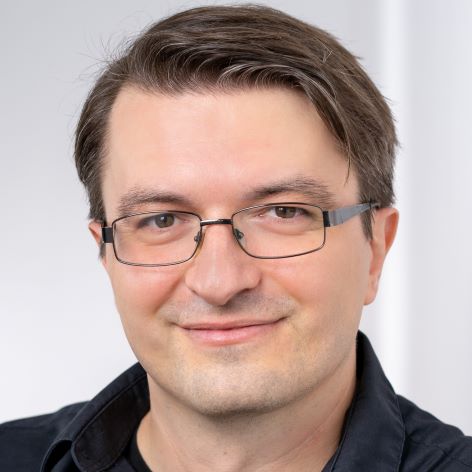
Ass.-Prof. Dr. Gernot Eichmann
+43 316 380 - 5244
Institut für Physik, Universitätsplatz 5, 8010 Graz
Office: Room 1-26
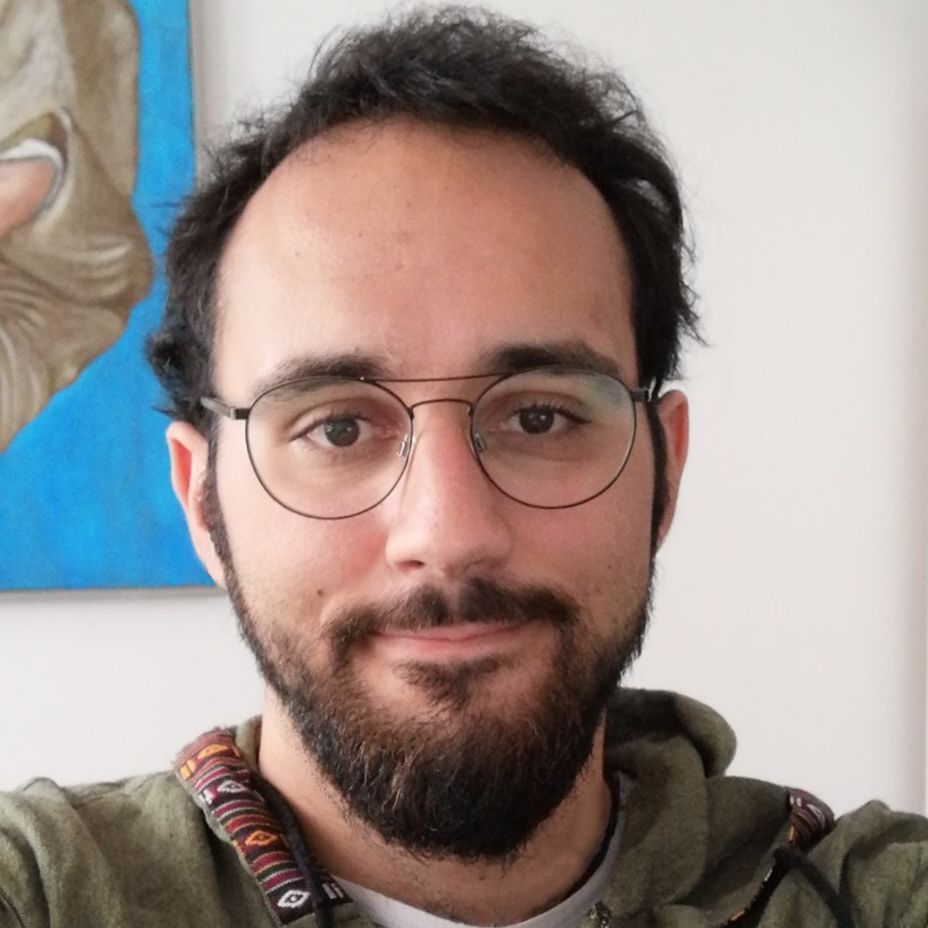
Msc. Joshua Hoffer
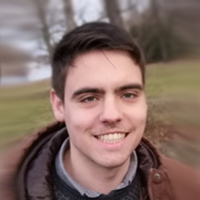
Msc. Eduardo Ferreira
+43 316 380 - 5089
Mozartgasse 14/II, 8010 Graz
Light-front wave functions, parton distributions
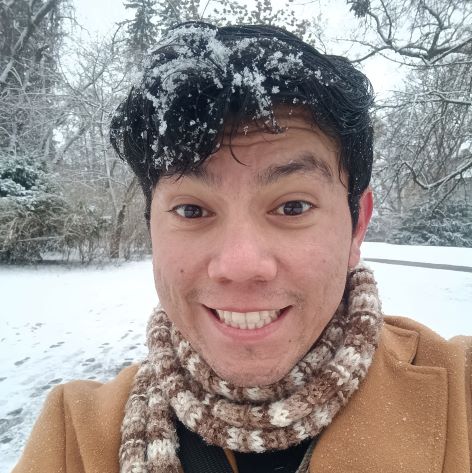
Msc. Raúl Torres
LIP Lisboa, Av. Prof. Gama Pinto 2, 1649-003 Lisboa, Portugal
Pentaquarks, meson spectroscopy, flavor matrix elements
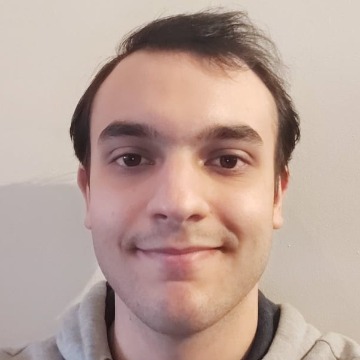
Msc. André Torcato
LIP Lisboa, Av. Prof. Gama Pinto 2, 1649-003 Lisboa, Portugal
Heavy-baryon spectroscopy
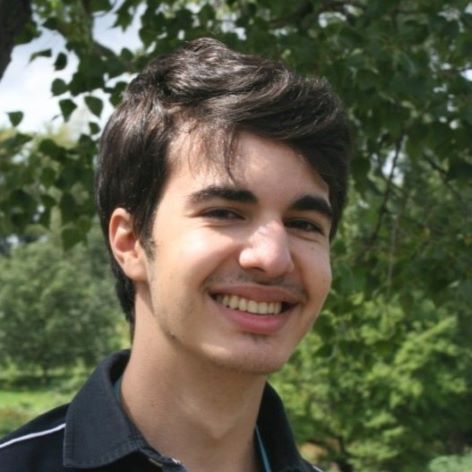
André Nunes
FCUL Lisboa, Campo Grande 016, 1749-016 Lisboa, Portugal
Six-quark states and the deuteron
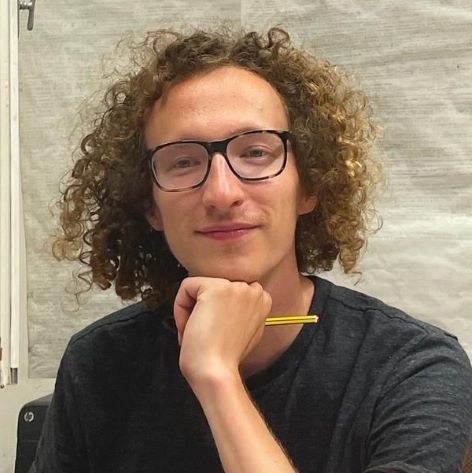
Felix Halbwedl
+43 316 380 - 5089
Mozartgasse 14/II, 8010 Graz
Analytic structure of correlation functions
Matthias Staffler
Luca Oberguggenberger
Benjamin Ciboci
Paul Mirtl
Kaja Karabašević
Oliver Regenfelder
Andreas Elmer
Elias Neuhold
Julius Dreveny
Guests and Visitors
- Teresa Peña, IST & LIP Lisboa, Portugal (April - May 2025)
- Alfred Stadler, University of Évora & LIP Lisboa, Portugal (April - May 2025)
- Stefan Leupold, University of Uppsala, Sweden (March 2025)
- An Di, University of Uppsala, Sweden (Dec 2023 - Jan 2024)
- Joshua Hoffer, University of Giessen, Germany (March & July/August 2023)
- Duifje van Egmond, Institute Polytechnique de Paris, France (Jan 2023)
Completed theses
- Paul Mirtl (U Graz) - bachelor, completed 2025
- André Nunes (FCUL Lisboa) - master, completed 2024 (Thesis)
- André Torcato (FCUL Lisboa) - master, completed 2022 (Thesis, LIP News)
- Eduardo Ferreira (IST Lisboa) - master, completed 2021 (Thesis, LIP News)
- Madalena Lourenço (IST Lisboa) - master, completed 2021 (Thesis)
International Collaborations
- NPStrong, LIP Lisboa, Portugal
- Quarks and Hadrons, University of Giessen, Germany
- Strongly Correlated Systems, University of Heidelberg, Germany
- ExoHad Topical Collaboration